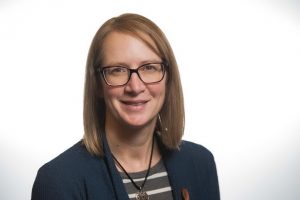 Jennifer Comstock is an Earth scientist at Pacific Northwest National Laboratory in Richland, WA and is the engineering and process manager and science products lead for the DOE Atmospheric Radiation Measurement (ARM) user facility. For ARM, she coordinates development activities and sets priorities for measurements and science products to have maximum benefit and impact to the science community. Jennifer received her Ph.D. in meteorology from the University of Utah, where she studied atmospheric remote sensing using combined sensor techniques, such as lidar, radar, and radiometry. She has participated in field campaigns related to cirrus cloud life cycle, orographic mixed-phase clouds, shallow and deep convective clouds, and aerosol radiative effects from anthropogenic sources as well as wildfires and agricultural burns. Her current interests include developing integrated instrument systems to optimize measurement strategies and developing algorithms to synthesize datasets and identify atmospheric phenomena using descriptive metadata and machine learning techniques. For more information about Jennifer, see https://www.pnnl.gov/atmospheric/staff/staff_info.asp?staff_num=5658.
Jennifer Comstock is an Earth scientist at Pacific Northwest National Laboratory in Richland, WA and is the engineering and process manager and science products lead for the DOE Atmospheric Radiation Measurement (ARM) user facility. For ARM, she coordinates development activities and sets priorities for measurements and science products to have maximum benefit and impact to the science community. Jennifer received her Ph.D. in meteorology from the University of Utah, where she studied atmospheric remote sensing using combined sensor techniques, such as lidar, radar, and radiometry. She has participated in field campaigns related to cirrus cloud life cycle, orographic mixed-phase clouds, shallow and deep convective clouds, and aerosol radiative effects from anthropogenic sources as well as wildfires and agricultural burns. Her current interests include developing integrated instrument systems to optimize measurement strategies and developing algorithms to synthesize datasets and identify atmospheric phenomena using descriptive metadata and machine learning techniques. For more information about Jennifer, see https://www.pnnl.gov/atmospheric/staff/staff_info.asp?staff_num=5658.
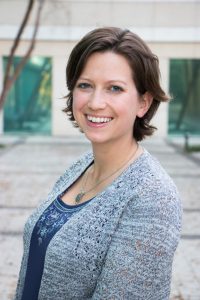
Celia Faiola is an Assistant Professor at University of California Irvine. She holds joint appointments in the Department of Ecology and Evolutionary Biology and the Department of Chemistry. She received her PhD from the Laboratory for Atmospheric Research at Washington State University in 2014, and conducted her postdoctoral research in the Aerosol Physics Research Group at the University of Eastern Finland. She is an affiliated member of the AirUCI research organization, which focuses on inter-disciplinary science studying air pollution, energy, and climate change. Her main research interests include plant-atmosphere interactions, plant volatile emissions, atmospheric chemistry, secondary organic aerosol, plant stress responses, and climate change. For more information, see https://faculty.sites.uci.edu/cfaiola/
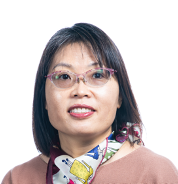 Dr. Jiwen Fan is a senior Earth Scientist at the Pacific Northwest National Laboratory. She received her Ph.D. degree from the department of Atmospheric Sciences at the Texas A&M University in 2007. Her research experience encompasses atmospheric chemistry and aerosols, clouds, convective systems, severe storms, aerosol-cloud interactions, and land-atmospheric interactions. Her current research focused on the impacts of physical factors of urbanization, aerosols, wildfires, and climate warming on convection and severe convective storms, understanding and modeling mesoscale convective systems, and developing cloud microphysics parameterizations for weather and climate models. For more information, see https://www.pnnl.gov/science/staff/staff_info.asp?staff_num=6030.
Dr. Jiwen Fan is a senior Earth Scientist at the Pacific Northwest National Laboratory. She received her Ph.D. degree from the department of Atmospheric Sciences at the Texas A&M University in 2007. Her research experience encompasses atmospheric chemistry and aerosols, clouds, convective systems, severe storms, aerosol-cloud interactions, and land-atmospheric interactions. Her current research focused on the impacts of physical factors of urbanization, aerosols, wildfires, and climate warming on convection and severe convective storms, understanding and modeling mesoscale convective systems, and developing cloud microphysics parameterizations for weather and climate models. For more information, see https://www.pnnl.gov/science/staff/staff_info.asp?staff_num=6030.
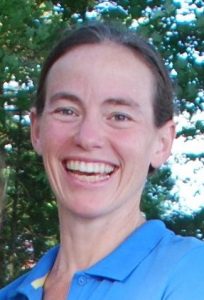 Dr. Kirsten Findell is a researcher at the Geophysical Fluid Dynamics Laboratory (GFDL) in Princeton, NJ, where she studies land-atmosphere interactions and global climate processes. Dr. Findell completed her B.S.E. in Princeton University’s Geological Engineering Program in 1992 and her Ph.D. in hydroclimatology at the Massachusetts Institute of Technology in 2001. Central to her work are questions about the role of the land surface in climate and about how convective triggering is influenced by both atmospheric and land surface conditions. Her work addresses issues including deforestation, land use/land cover change, floods and droughts, and continental aridity in a changing world. She currently co-chairs the Global Land-Atmosphere System Studies (GLASS) Panel of the Global Energy and Water Exchanges (GEWEX) project, which is one of the core programs of the World Climate Research Program (WCRP). https://www.gfdl.noaa.gov/kirsten-findell-homepage/
Dr. Kirsten Findell is a researcher at the Geophysical Fluid Dynamics Laboratory (GFDL) in Princeton, NJ, where she studies land-atmosphere interactions and global climate processes. Dr. Findell completed her B.S.E. in Princeton University’s Geological Engineering Program in 1992 and her Ph.D. in hydroclimatology at the Massachusetts Institute of Technology in 2001. Central to her work are questions about the role of the land surface in climate and about how convective triggering is influenced by both atmospheric and land surface conditions. Her work addresses issues including deforestation, land use/land cover change, floods and droughts, and continental aridity in a changing world. She currently co-chairs the Global Land-Atmosphere System Studies (GLASS) Panel of the Global Energy and Water Exchanges (GEWEX) project, which is one of the core programs of the World Climate Research Program (WCRP). https://www.gfdl.noaa.gov/kirsten-findell-homepage/
 Pierre Gentine is the Maurice Ewing and J. Lamar Worzel Professor of geophysics at Columbia University. He received his PhD from MIT in 2010 and was a lecturer in applied mathematics and applied physics at Columbia from 2009 to 2011. His group focuses on the terrestrial hydrological and carbon cycles and how they are changing with climate change, using a combination of observation, modeling and machine learning. For more information, see http://gentinelab.eee.columbia.edu/
Pierre Gentine is the Maurice Ewing and J. Lamar Worzel Professor of geophysics at Columbia University. He received his PhD from MIT in 2010 and was a lecturer in applied mathematics and applied physics at Columbia from 2009 to 2011. His group focuses on the terrestrial hydrological and carbon cycles and how they are changing with climate change, using a combination of observation, modeling and machine learning. For more information, see http://gentinelab.eee.columbia.edu/
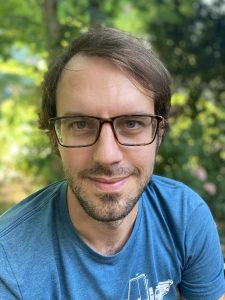 Manuel Helbig is an Assistant Professor in Atmospheric Science in the Department of Physics and Atmospheric Science at Dalhousie University (Halifax, Canada). His research focuses on land-atmosphere interactions in the boreal biome in a warming climate. In particular, his work combines eddy covariance flux measurements with flux footprint modeling, boundary layer modeling, and remote sensing to characterize spatial and temporal changes in land-atmosphere coupling. He received his PhD from the Department of Geography at Université de Montréal in 2017 where he investigated the impacts of permafrost thaw on land-atmosphere interactions and established together with Oliver Sonnentag (Université de Montréal) new AmerFlux sites in the Northwest Territories, Canada. At Dalhousie University, he is setting up the first long-term land-atmosphere observatory in Atlantic Canada. For more information, see http://fizz.phys.dal.ca/~helbig/ and https://scholar.google.com/citations?user=ntPlxu4AAAAJ&hl=en
Manuel Helbig is an Assistant Professor in Atmospheric Science in the Department of Physics and Atmospheric Science at Dalhousie University (Halifax, Canada). His research focuses on land-atmosphere interactions in the boreal biome in a warming climate. In particular, his work combines eddy covariance flux measurements with flux footprint modeling, boundary layer modeling, and remote sensing to characterize spatial and temporal changes in land-atmosphere coupling. He received his PhD from the Department of Geography at Université de Montréal in 2017 where he investigated the impacts of permafrost thaw on land-atmosphere interactions and established together with Oliver Sonnentag (Université de Montréal) new AmerFlux sites in the Northwest Territories, Canada. At Dalhousie University, he is setting up the first long-term land-atmosphere observatory in Atlantic Canada. For more information, see http://fizz.phys.dal.ca/~helbig/ and https://scholar.google.com/citations?user=ntPlxu4AAAAJ&hl=en
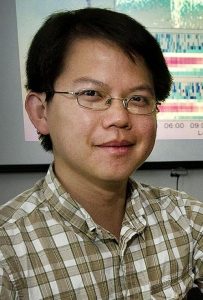
Chongai Kuang is an Atmospheric Scientist within the Environmental and Climate Sciences Department at Brookhaven National Laboratory. He received his PhD from the Department of Chemical Engineering at the University of Minnesota, Minneapolis in 2009, and his BS in Chemical Engineering and Chemistry from the Department of Chemistry at the University of California, Berkeley in 2004. Since 2011, he has been an ARM Lead Instrument Mentor for aerosol microphysical measurements, and has been a science team member of an ASR-supported Science Focus Area. Since 2019, he has been the site science team lead for the science and deployment plan of the ARM AMF3 to the Southeastern United States (https://www.arm.gov/capabilities/observatories/amf/locations/seus). His main research interests include aerosol formation and growth, and technique development for the detection of newly formed aerosol down to 1 nm in diameter. For further information, see: https://www.bnl.gov/staff/ckuang.
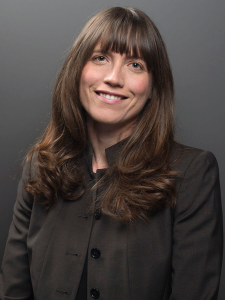
Kim Novick is Associate Professor and Fischer Faculty Fellow at the O’Neill School of Public and Environmental Affairs (Indiana University – Bloomington). She received her PhD from Duke University’s Nicholas School of the Environment in 2010, and her B.S.E. from Duke’s Pratt School of Engineering in 2002. Kim is PI for six AmeriFlux towers, including the long-running Morgan Monroe State Forest Flux tower in south-central Indiana. Her research interests include synthesizing tower data with leaf- and tree-level observations to understand plant water use strategies, and quantifying the climate mitigation and adaptation potential of managed land-cover and land-use transitions. Kim serves on the AmeriFlux science steering committee, is the co-chair of NEON’s Science, Technology, and Education Advisory Committee (STEAC), and is co-organizer of Fluxcourse. For more information, see https://scholar.google.com/citations?user=K5tffpEAAAAJ&hl=en

Joe Santanello is a Physical Scientist in the Hydrological Sciences Laboratory at NASA-GSFC in Greenbelt, MD. He received his PhD from the Department of Geography at Boston University in 2005, and his BS and MS in Meteorology from Rutgers and Penn State University, respectively. Since 2008, he has been the lead of the GEWEX-GLASS local land-atmosphere coupling (LoCo) project, and his research focuses on land-atmosphere interactions, land surface and mesoscale model development, soil moisture and boundary layer (PBL) interactions, and remote sensing of land and PBL. He is currently leading GSFC’s ‘PBL from space’ initiatives focused on advancing technology and modeling capabilities to support improved observations of the PBL, and in turn enable model development, land-atmosphere science, and weather and climate prediction. For more information on Joe, LoCo, and the PBL initiative please see:
https://science.gsfc.nasa.gov/sed/bio/joseph.a.santanello
https://science.nasa.gov/earth-science/decadal-pbl

Allison Steiner is a professor of atmospheric sciences in the Department of Climate and Space Sciences and Engineering and the Department of Earth and Environmental Sciences at the University of Michigan. She received her B.S. in chemical engineering from Johns Hopkins University and her Ph.D. in atmospheric sciences from Georgia Institute of Technology. Her research uses and develops models to explore the interactions of the biosphere and atmosphere, with the goal of understanding the natural versus human influence on climate and atmospheric chemistry. For more information, see http://clasp-research.engin.umich.edu/faculty/steiner/index.html
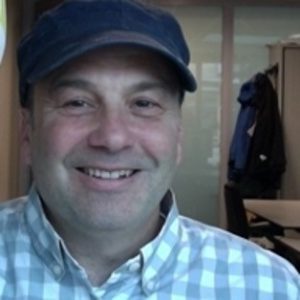
Prof Jordi Vilà-Guerau de Arellano (WU) is Professor of Meteorology at the Meteorology and Air Quality group in Wageningen University (The Netherlands). He is also affiliated at the Max Planck Institute-Chemistry in Mainz and Science Officer of boundary-layer meteorology at the European Geophysical Union. His main field of interest is in the way the coupling between plants, turbulence and clouds influences weather, air quality and climate. To this end, he combines high numerical resolution simulations, regional modelling and the analysis of observations taken by advanced instrumental techniques. He is a lead-developer and -author of teaching and research concept Chemistry Land-Surface Atmospheric Solid Slab (CLASS) model (https://classmodel.github.io/). He is a main developer of the Dutch Atmospheric Large-Eddy Simulation (DALES) (https://github.com/dalesteam/dales) which explicit solves land-atmosphere interactions, turbulence, chemistry and clouds. More information on his publication list can be found at: https://orcid.org/0000-0003-0342-9171 and Jordi Vila | Publons.
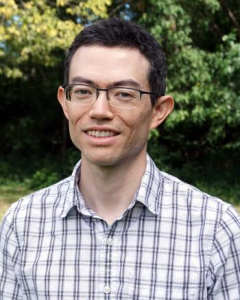
Ian Williams is an assistant professor in the Department of Geological and Atmospheric Sciences at Iowa State University. He was previously a research scientist at the Lawrence Berkeley National Laboratory. Dr. Williams has published on a wide range of topics in atmospheric and terrestrial ecosystem sciences, including boundary layer and convective clouds, cloud radiative feedback, climate variability, and the terrestrial carbon sink. His current research uses a combination of numerical modeling, eddy-covariance measurements, and remote sensing, to better understand and model the connections between the land surface, clouds, and precipitation. For more information, see https://faculty.sites.iastate.edu/inw/
